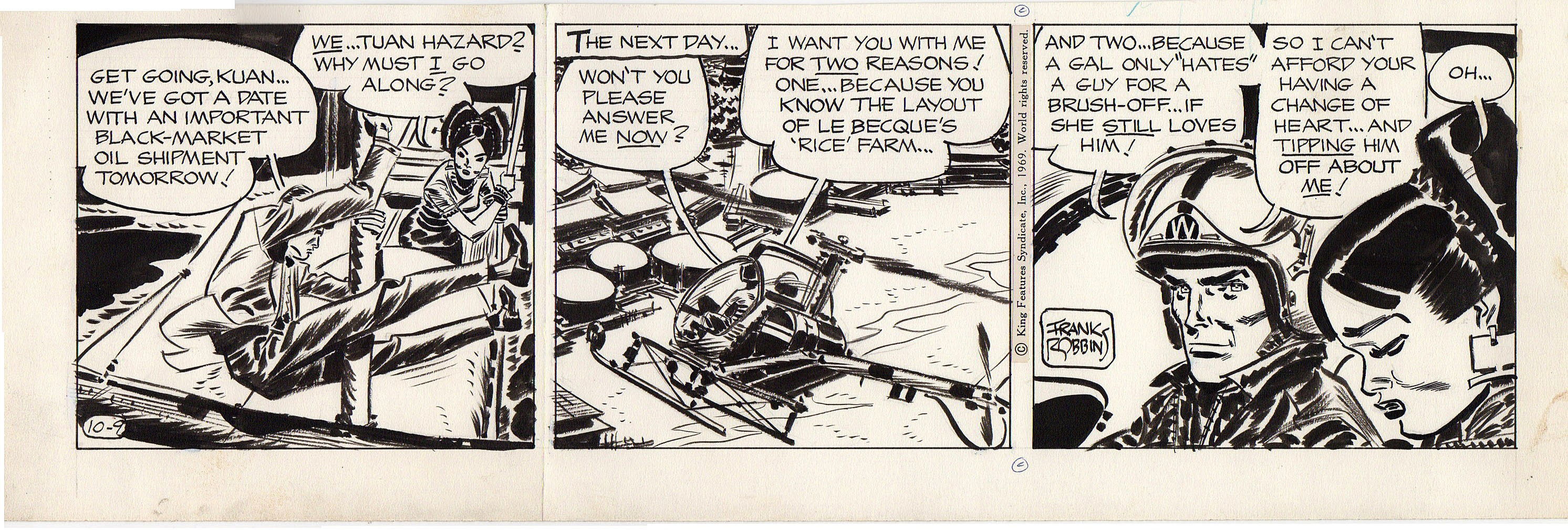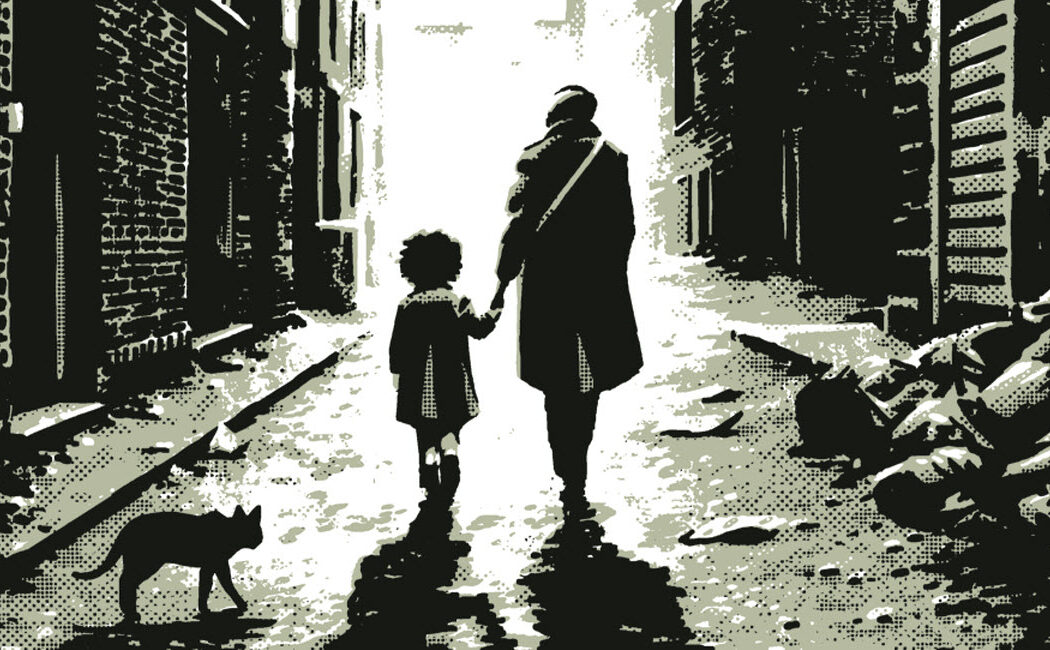
Still walking into a new year, a new time…
The image above is by David Aja, from Aja and writer Ann Nocenti’s graphic novel The Seeds (2021).

Bob Scott is both a Disney/Pixar animator and the writer/artist of the daily syndicated webcomic Bear with Me, which began in 2009 under its original title Molly and the Bear. In a recent interview on the Dorkaholics site, Scott offered his simplest advice for aspiring cartoonists: “Draw, draw, and draw some more. The more you draw the better you’ll get.” You can read Scott’s charming strip from the beginning here on GoComics. (And check out other recent interviews on Dorkaholics, including the chats with digital illustrator Megan Luu and cartoonist Chuck Whelon.)

There’s been a welcome flurry of online articles about the classic comic strip Peanuts and its creator and artist Charles Schulz. At the website for the military newspaper Stars and Stripes, J.P. Lawrence wrote about how Schulz’s experiences in the Army influenced the character of Charlie Brown. (Schulz: “The three years I spent in the army taught me all I needed to know about loneliness. My sympathy for the loneliness that all of us experience is dropped heavily upon poor Charlie Brown.”) On YouTube, the Library of America’s Andrew Blauner conducted a panel discussion celebrating “Peanuts at 70” with authors Jonathan Lethem and Clifford Thompson and cartoonists Sarah Boxer and Chris Ware. And the Charles Schulz Museum posted a “Make a Peanuts Mini-Comic” activity—with some blank panels to allow budding artists to make comics that showcase their own art.
 Since August 2020, cartoonist Tiffany Babb has chronicled the events of her life—her experiences in Covid quarantine, her time with her mother, and even the tragic death of her beloved dog Watson—in her online strip All of Me. Babb’s work was recommended to me by Avery Kaplan, who writes that Babb’s knack for everyday observations extends to such subjects as “personal grooming (like when forgetting to brush her hair leads [Babb] to reflect that her appearance resembles a shark)” and to Babb’s anxiety over “the actions of a villain on Colombo.” And at her website, Babb posts samples of her writing; you can sign up to receive a monthly essay about art and popular culture from her.
Since August 2020, cartoonist Tiffany Babb has chronicled the events of her life—her experiences in Covid quarantine, her time with her mother, and even the tragic death of her beloved dog Watson—in her online strip All of Me. Babb’s work was recommended to me by Avery Kaplan, who writes that Babb’s knack for everyday observations extends to such subjects as “personal grooming (like when forgetting to brush her hair leads [Babb] to reflect that her appearance resembles a shark)” and to Babb’s anxiety over “the actions of a villain on Colombo.” And at her website, Babb posts samples of her writing; you can sign up to receive a monthly essay about art and popular culture from her.

Here’s info about intellectual property law (which is much more interesting than it sounds). Duke University’s Center for the Study of the Public Domain runs an incredible site about the Public Domain, that group of cultural works that falls legally out of copyright and then can be used and reproduced for free by anyone, in any context. (F. Scott Fitzgerald’s The Great Gatsby entered the Public Domain on January 1, 2021.) Browse the site to discover why the Public Domain matters, why fewer and fewer works enter the Public Domain every year, and more. The Center also produces comics that explore and explicate the legal and ethical issues of the Public Domain, including Bound by Law by Keith Aoki, James Boyle, and Jennifer Jenkins (2006), and Theft! A History of Music (2016) by Aoki, Boyle, and Jenkins, where the authors argue that the centuries-long tradition of composers and performers borrowing from each other keeps music fresh and original.
Frank Robbins spent his life in comics. Born in 1917, Robbins was only 22 years old when the Associated Press asked him to take over Scorchy Smith, a newspaper comic strip about a heroic pilot that had been drawn previously by Noel Sickles, an artist who influenced Robbins’ visual style. After five years on Scorchy, Robbins decamped to King Features Syndicate, where he created the strip Johnny Hazard and wrote and drew Johnny’s adventures for thirty-three years. Beginning in the late 1960s, Robbins also began to work for the main comic book companies, DC and Marvel, and this is when I first saw his art, in atmospheric short stories for DC anthology titles like The House of Secrets and Batman tales for Detective Comics. In 1975, Robbins was the central artist for my favorite Marvel series, The Invaders, featuring the Human Torch, Sub-Mariner and Captain America fighting the Axis during World War II. Robbins later retired, moved to rural Mexico, focused on painting, and passed away in 1994. His jangly art style wasn’t always in favor with comics fans, but I loved the life and energy in his cartooning, and I’m happy to post some Robbins images here.






This weekly blog post is written and compiled by Craig Fischer. To send along recommendations, ideas, and comments, contact Craig at [email protected] [.]



